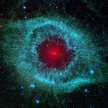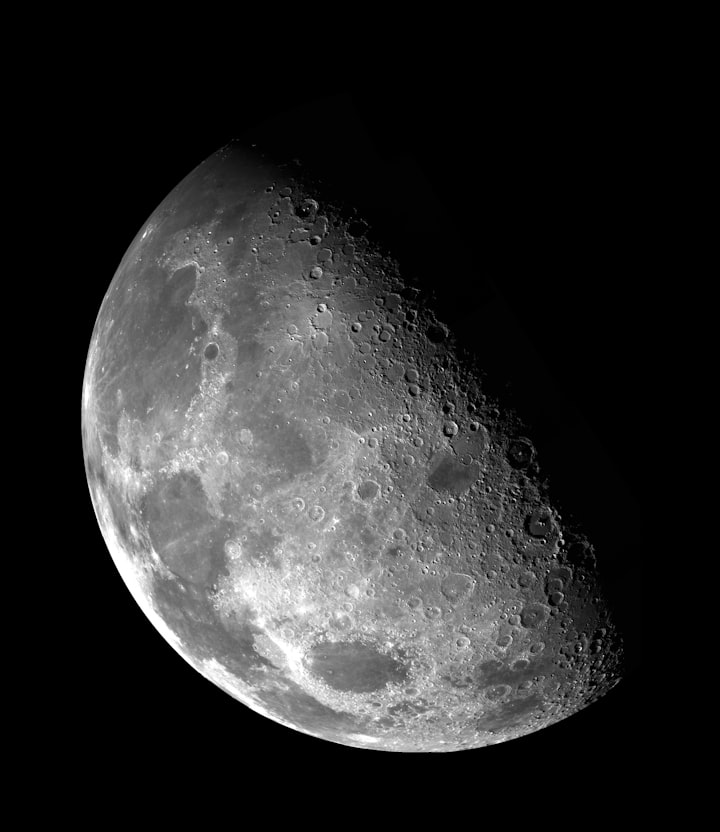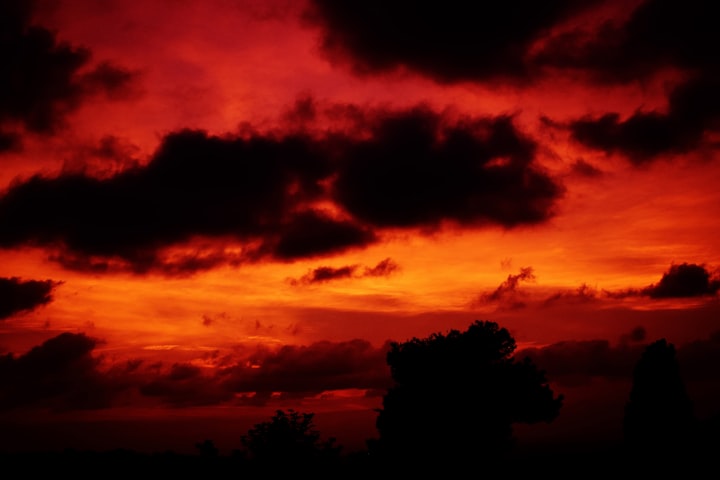We Have Only One Natural Satellite
Our one and only natural satellite is of course the moon.
British spelling.
What is a moon?
The definition of a moon is a celestial body that orbits a planet, a dwarf planet, or other smaller objects. They are also known as natural satellites.
Moons can form in several different ways. It is thought that some can form along with their parent planet; the gravitational force of a planet can capture a celestial body, trapping it as a moon.
The Earth’s Moon is believed to be the result of a collision when a planet-sized object impacted the young Earth. The material that was flung far out into space eventually came together to form our Moon.
Ganymede, a satellite of Jupiter, is the largest moon in the Solar System, larger than the planet Mercury. Including the Sun, Ganymede is the ninth largest object in the Solar System.
Mars has the smallest moon, which is called Deimos. As of 2023, the eight planets in the Solar System share 280 confirmed and provisional moons, which does not include shepherd moons.
Dwarf planets can also have moons. Poor Pluto, whose planet title was taken away in 2006, is now known as a dwarf planet. Pluto has five moons.
Asteroids, these smaller bodies of mass, can also have moons. In 1993, the spacecraft Galileo flew by the asteroid Ada, and it was found to have a tiny moon, which is now called Dactyl.
About 4.5 billion years ago, our moon was a lot closer, orbiting at an estimated distance of 20 to 30 thousand kilometres from planet Earth. Today, it is 384,000 kilometres away. There was no life back then that could have witnessed it, but imagine how large the moon would have looked in the night sky.
As of now, our Moon is travelling away from the Earth at 3.8 centimetres per year, which would be roughly 2.7 metres in a human lifetime. It seems like a very short distance, but you can see how the kilometres would add up over millions or billions of years.
..........
Here is another of my stories, hopefully, you find it interesting and educational.

Image by WikiImages from Pixabay
Planet Mercury.
This rocky inner planet is positioned closest to the Sun and orbits at an average distance of 58 million kilometres.
Look at the image above and see how small Mercury is compared to Venus and the Earth.
The planet to the right is Mars.
Planet Earth has a diameter of 12,742 kilometres, but in comparison, Mercury is only 4,880 kilometres in diameter.
All eight planets that circle the sun are in elliptical (oval-shaped) paths. Mercury can be as close as 47 million kilometres and as far away as 70 million kilometres from our local star. Mercury is thought to have formed much farther away from the Sun than in its present position.
The nearer an object orbits a star, the faster it travels; therefore, among all the planets, Mercury orbits the Sun the fastest, speeding along at over 170,000 kilometres per hour.

Image by Comfreak from Pixabay
Mercury takes only 88 Earth days to complete its orbit around the Sun, which is known as a mercurial year. A sidereal day on this planet is very long, which is due to its very slow rotation speed, taking over 58 Earth days to complete one turn on its axis.
A solar day is different; you could say that it is the time it takes between two noons when the sun is at its highest in the sky. The difference between a sidereal day and a solar day on Earth is only 4 minutes, but Mercury has the longest solar day of any planet in the Solar System.
Imagine this impossible scenario: if you could stand on the surface of Mercury and look up at the sun, you would have to wait 176 Earth days before the sun came back to the same position in the sky.
The gravity on Mercury is 0.375 of that on Earth, and having almost no atmosphere, its surface has no protection from the sun’s rays or incoming cosmic missiles. I weigh 80kg here on Earth, but on Mercury, my weight would be just over 30kg.
Mariner 10 was launched from NASA’s Kennedy Space Centre on November 3, 1973, and became the first spacecraft to visit Mercury, making its first flyby of three on March 29, 1974.
Nasa’s Messenger spacecraft was next to visit; it left the Earth on its long flight on August 3rd, 2004 and entered orbit around Mercury on March 18, 2011, becoming the first spacecraft to orbit the planet. The mission terminated with a controlled impact on the surface of the planet on April 30, 2015.

Image of a small crater on Mercury. Credit: NASA
Messenger sent back a wealth of information. The surface was found to be dry, harsh, and covered in ancient craters, the largest being the Caloris Basin measuring 1,350 kilometres in diameter, thought to have been caused by a 100-kilometre-wide asteroid that slammed into Mercury around 4 billion years ago.
Surface temperatures can reach 430 degrees Celsius during the day and can drop to minus 190 degrees Celsius at night, giving the planet an average surface temperature of 178 degrees Celsius. Mercury is slightly larger than our moon but smaller than Saturn’s moon Titan and Jupiter’s moon Ganymede.
Mercury has no moons.
Orbiting the Sun so close makes Mercury difficult to see; the best time to view it would be for a short time during sunset or sunrise when the Sun is out of sight under the horizon.
The BepiColombo is a European-Japanese mission that has sent a spacecraft to Mercury. There are two orbiters fixed together, and once they arrive at their destination, they will separate and go into different orbits around the planet.
The mission will perform a comprehensive study of the planet for at least one year, maybe more. The two orbiters were launched on an Ariane 5 rocket in October 2018. From that date, we will have to wait seven years for them to arrive at their destination, which is due to their long and complicated flight path.
The spacecraft will have one flyby of the Earth, two flybys of Venus, and six flybys of Mercury before it finally achieves gravity capture at Mercury in December 2025.
The end
..........
About the Creator
A B Forbes
Someone with a lifelong passion for that gargantuan area we call the universe. I also write stories about life itself. Enjoy







Comments (1)
Very informative and interesting!